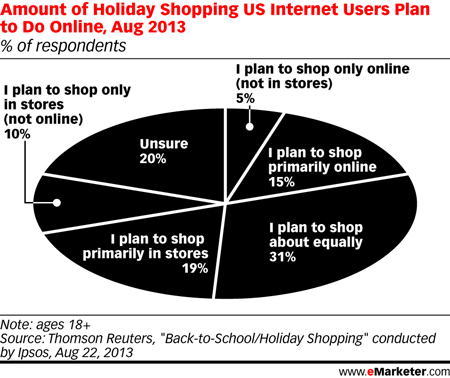
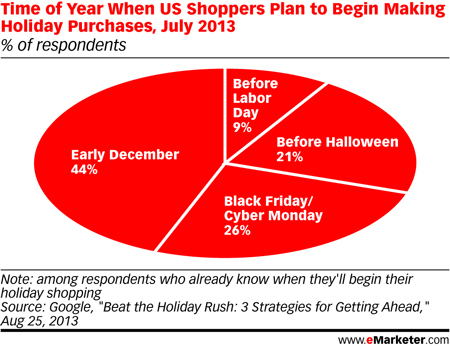
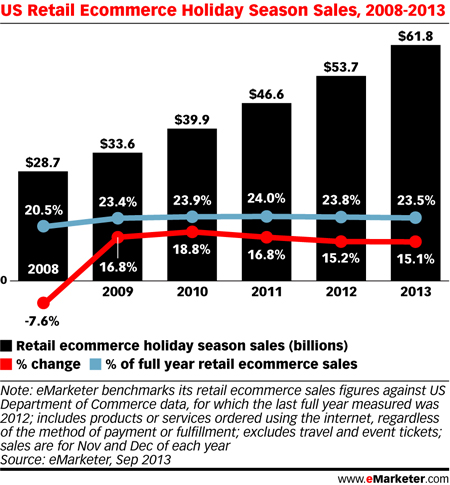
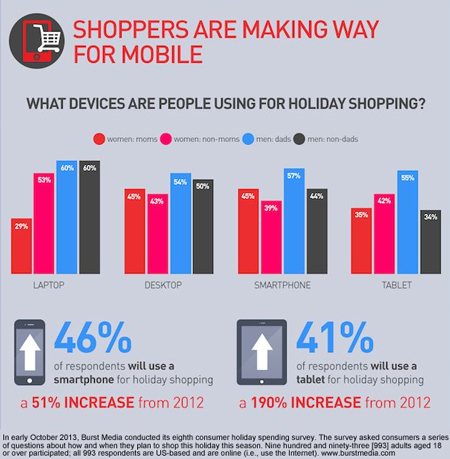
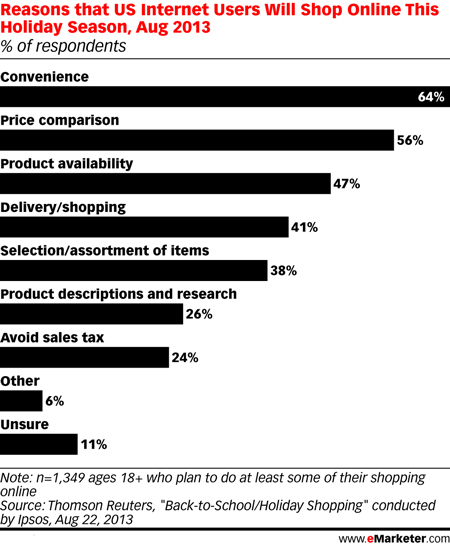
 This year’s holiday is going to be one for the books.
This year’s holiday is going to be one for the books.
Even if all previous sales records are not broken, a good holiday season is going to seem like a major success come January.
Still, for your small business in Orange County or anywhere in Southern California, the holiday sales season is going to be a major test of your acumen.
Let’s get ready.
| Social media is a great way to keep your customers engaged. It can also be a great way for you to build up a following and up-sell your products or services. Customers today want to feel a connection with the companies they do business with. Social media creates this connected community. |
|
QUICK TIPS:
Your customers or audience will swiftly tune you out if you just talk just about yourself. Post interesting content from other relevant sources. Make sure your ideal customers will find this content valuable.
Social media marketing results do not happen overnight. It takes persistent and consistent effort to produce successful results.
More on Social Media: Start creating relationships with the customers you do business with. Try using this weekly social media To-Do List from Hubspot.com to help you get started. http://blog.hubspot.com/weekly-social-media-list-under-100-words-sr |
| People spend 95% of their online time browsing websites with display ads. Whether you are trying to target a regional customer base or focus on nationwide markets, e-Display ads can help you generate online leads, jumpstart stagnant sales, introduce new or seasonal products, and help build your brand. |
QUICK TIPS:
Know who you are selling to. Your demographic settings should be tailored to the audience of these websites. For example, if you sell golf clubs, make sure you maximize your ad spend by targeting your ads to golf related websites.
Display Ads are generally a “top of the funnel” campaign. That means it’s very broad. Be patient and test various targeting settings to see which ones are most effective.
Check your analytics to find out which demographics, topics and categories are performing best. Spend more of your budget on the websites, or targeting groups that show higher conversion rates. |
| More on Display Advertising:
Thinking about introducing new or seasonal products for the holidays? In a recent study by Experian.com we can see that nearly 60% of marketers will utilize online display advertising this holiday season, topping other popular channels such as search, email, and print ads. Click here to read more.
|
|
|||
| More on SEO:
Strengthen the quality of your SEO for fall 2013 using these “8 SEO Cleanse and Recharge Ideas” from SearchEngineLand.com. Click here to read more. http://searchengineland.com/8-fall-2013-seo-cleanse-recharge-ideas-171376 |
|
Retargeting is a powerful tool in the online advertising world. Even if you are not using it as part of your current marketing strategy, you’re competition probably is! This technology allows you to place ads in front of visitors who have already been to your website while they browse the internet. Retargeting is a powerful marketing tool, but it is easy to get wrong, and the consequences can be costly in terms of your budget and brand. |
QUICK TIPS:
Create eye catching, dynamic ads that include a strong hook. A “hook” gives your prospects a compelling reason to take action right now. Examples of hooks are deals, sale pricing, discounts, or coupon codes. Make sure to include a phone number on all of your ads!
Don’t make the common mistake of creating one campaign that contains numerous ad groups. Create multiple campaigns, one for each of your desired goals. Your campaigns will be a lot easier to manage and you will have a better understanding of what is working and what is not. |
| More on Retargeting:
In a recent Google case study we can see some astonishing results with the use of Dynamic Remarketing. Click here to see the results. http://www.google.com/think/case-studies/case-study-campmor.html
|
 There are 34 cities and another 19 unincorporated communities across Orange County. Every one of them is loaded with restaurants, eateries, bars, lounges and cafeterias. There are cafes, bistros and lunch counters and all of them miss out on at least some of the people looking on-line for where and when to eat.
There are 34 cities and another 19 unincorporated communities across Orange County. Every one of them is loaded with restaurants, eateries, bars, lounges and cafeterias. There are cafes, bistros and lunch counters and all of them miss out on at least some of the people looking on-line for where and when to eat.
Orange County is a savvy market, too. Some of your toughest competition is probably all over the local and mobile SEO scene, but then again, lots of other restaurants are not. There are restaurants well positioned enough that they can get away with basically letting their store-front do all the marketing. But guess what? They’re still leaving the entire Local Search and Mobile Markets to chance.
That’s literally leaving money on the table, so let’s start scooping some of it up!
This article is just to give you a start – with five fast and easy tricks – to optimize your Orange County restaurant for local and mobile search. It’s a big field, but there’s no reason not to get going now.
1. First, Claim Your Google+ Listing!
That might seem obvious. But just because Google has indexed your business and listed you, it doesn’t mean they’re going to optimize things. Do a search and find your listing in Google Plus. If it’s there but the main image is a giant map, then it’s still unclaimed. Google actually makes it pretty easy, to select the “Manage This Page” button and claim the listing. You need to have a Gmail account and you’ll need to verify that you’re the business owner or an authorized rep by telephone or a post card through the mail.
If no listing exists, you’ll need to set one up. Just go to google.com/places and click on “Get Started For Free”. You’ll need to fill out everything as accurately as possible and while you shouldn’t use the page to try to replace or stand in for a website, it’s almost as important. Make sure they get the restaurant name, physical address, and phone number, and the web address right. Categories, especially for food type are tremendously important, too, so select them carefully. You can continue working on it for several weeks or even months so don’t worry about getting it all correct during the first sitting. You’ll also want to add some photos.
2. Check Your Mobile Compatibility
One big reason that your Google Plus page is important is that it’s thoroughly mobile compatible. So even though it’s not recommendable to totally abandon your website in favor of a Google Plus page, you can get away with letting your Google Plus page stand in as a purely mobile page – at least while you’re optimizing for mobile search. It’s a big market, and restaurants are foolish to ignore the growth potential of mobile.
3. Optimize for Local Place Names
As we mentioned above, the city names, unincorporated communities and all kind of place names are an important part of optimizing for local. One good way to distinguish your business from others is with the place name used as a keyword. In many cases, that can mean optimizing pages for your food type and your place name. Santa Ana Pizza is almost ok, but Santa Ana is a pretty big place. If your reputation is good, people will drive across the city for it. Otherwise they’re going to want the Pizza that’s closest. Otherwise, you need to be optimizing for “Heninger Park Pizza” and all the communities you’re serving.
We’ve written a lot about keyword research, and for local search optimization, local, community level and neighborhood names can be among the most important keywords.
4. Do Your Research
Building on that thought, think about how people are likely searching for Pizza, or your food, in your area. Especially if your selling a niche food, or an alternative, such as vegetarian only, you’ve got to be aware of the most important combinations of keywords people are using to search. You should also check the Google Adwords Keyword Planner for a more thorough understanding of how people are searching in your area.
5. Understand Off-Site SEO
Local search SEO for Restaurants is very much an off-site process.
Dozens of directories will help with your rankings, particularly if they accept some reviews (and you get some reviews) but you need to claim the most important of your listings and optimize them. Make sure your contact information is consistent across each of them, and don’t feel overwhelmed. There can be literally hundreds of listing sites. You don’t need to claim and be on every single one, but the most important for your market should be sufficient.
Keep in mind also, that Orange County is home to some listings directories that are in and of themselves as important as the big national directories like Yelp and Foursquare.
BestRestaurantsinOrangeCounty.com is a good place to start. And while the OCStandard.com, for example, will accept your listing for a fee, it’s really the type of market you’re serving that will determine how much, if anything, you might budget toward online marketing or advertising.
More on SEP: Illustrating the importance of being on top, an infographic on SearchEngineJournal.com shows clicks from paid search listings are now outnumbering clicks from organic (unpaid) search listings by almost 2:1 in keyword searches with high commercial intent, or keywords where the searcher is looking to buy a product or service. Click here to read more. http://www.searchenginejournal.com/are-google-ads-winning-an-data-filled-infographic/ |
As a full service SEM agency, we often field questions about how and/or why Google makes changes to its Search Engine Results Pages. The only honest answer to that question is “I don’t know.” It’s very difficult to predict Google’s next move. This is especially true for our SEO clients. They’re making changes all the time, both visible and invisible. The only promise we can make is that we will quickly pivot and create solutions for our clients to ensure they can navigate through this ever-changing landscape. Here’s an interesting piece from Search Engine Journal giving a behind-the-scenes glimpse into some of the tools Google use to improve the quality of its SERPs. While it doesn’t answer the how/why questions, it certianly gives good insight into the process. Link here.
How Google Collects Search Quality Data on Your Site
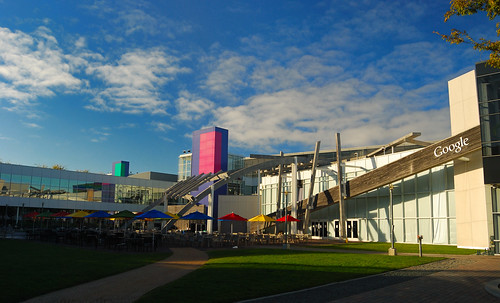
It’s little known that Google was never meant to be a company. In fact, in 1998 Vinod Khosla (one of the first investors in Google) managed to convince Larry Page and Sergey Brin to sell their technology to Lycos, Excite, or Yahoo, the leading search engines of the time, for a paltry million dollars so that they could go back to focusing on their research at Stanford University.
While each company took the time to review Larry Page’s and Sergey Brin’s work, they passed on the opportunity of purchasing it. The companies were simply not that concerned with search quality; they figured their results were good enough and that they needed to differentiate themselves from the competition by other means.
When the two friends decided to pursue their search engine anyway, they made focusing on search quality their top priority. They even put it in their mission statement: “Organize the world’s information and make it universally accessible and useful.”
Google has stayed true to this commitment more than a decade later. It still dedicates tremendous amounts of resources figuring out how to deliver the best possible results.
However, when a search engine is dealing with millions of searches each second –15 percent (or 500 million queries per day) of which it has never encountered before- how does it make sure that it is delivering the best possible experience? The answer is that it uses a combination of automatic and manual review processes.
Because automatic review processes (such as PageRank, Panda, and Penguin) have been discussed so often, this piece will focus on the more manual ways that Google gathers data to judge search result quality.
In the interest of improving its algorithm, Google performed more than 20,000 experiments on its search results in 2010. Much of the data from these experiments comes from placing a percentage of users into specific buckets.
If you use Google, you are likely unwittingly helping the company improve their results as part of one of these experiments right now. Based on the outcome of these experiments, Google makes more than 500 changes to their algorithms each year with each one typically impacting a small percentage of search engine results.
Experiments might be as simple as split testing their website layout or as complicated as altering millions of search engine rankings in an attempt to improve their quality.
The primary way that Google gains data about its search results is through basic usage statistics.

For instance, if you happen to look for a dentist using Google and you click on the first result, Google can indirectly measure your reaction to the website by seeing whether you return back to the search engine results page (SERP) and click on another link.
It is clear you didn’t find what you were looking for if you have to return to the search engine to click on another link. Google’s goal is to provide you with what you were looking for in the least amount of time possible.
Google knows what types of usage patterns to expect based on query intent (navigational, informational, or transactional) and aggregates data on each link’s performance.
Statistics they collect include bounce rate and time spent on site. Even though these statistics are indirect, they tend to be incredibly accurate at predicting if a user has liked the content they clicked on.
Another way that Google can gather search result quality data is by looking at page load speeds from people who have installed their Toolbar. You can see the data Google has collected from users about your site’s speed in Google Analytics & Webmaster Tools. While Google also tests website speeds when its bot is crawling the web, the Toolbar provides the company with more information about real world conditions.
Google started gathering social media data quite a few years ago. Since Google does not have fire hose access to Twitter and Facebook, they have been hesitant to trust social signals, but these signals are becoming an ever-growing part of its algorithm.
In the past, Google relied almost exclusively on backlinks to determine how to rank sites. The problem with this approach is that it only lets webmasters decide whether your site is high quality.
Social media signals are the democratization of search engine quality measurements. Basically, social media has the potential to let everyone vote on whether a page should be ranking in Google. If you share a website on your social media profiles, it likely means that you viewed the site favorably.
Social media data will play a huge role in the future of search and will be heavily drawn upon by search engines to determine how people are reacting to content online.
While indirect data from its users is great, Google still has a difficult time understanding why users don’t like certain pages. It has plenty of data, but it needs to transform it into information through analysis and evaluation to make sense of it all. As a result, it has started to take more direct feedback from its users as well.
As a search engine optimizer, I conduct a fair amount of searches each day (so much so that I often have to type in a CAPTCHA just to use the service). The following images are from my real world experiences.

After searching Google for “local search engine optimization”, they presented me with the box in the right hand corner. The box asked me to rate two different pages for relevance.

One of the pages that Google was looking for information on was a Search Engine Watch article.

The other page Google wanted input on was for a local search engine optimization company.
After visiting the two pages it’s fairly obvious what Google was looking for with its questionnaire. Since the query I typed into Google (“local search engine optimization”) is ambiguous, Google wasn’t sure what type of content to show.
They were checking to see if people were looking for articles on local search engine optimization (an informational query), or if they were looking for a company to hire (a transactional query).
I voted for the Search Engine Watch article, as the majority of people must have, because Google has recently begun integrating News results into the query. Now rather than showing local SEO companies near the top of the SERP, Google is showing more articles instead.
A few weeks later I performed a Google search for “great science fiction novels” to check on the types of queries for which it was using its new slider.

After performing the search, I noticed a feedback button that I hadn’t seen on any of the other sliders. When I clicked on it, the following buttons showed up:
 Google was looking for input on the types of books that should be in the slider. If enough people feel that a certain book should not be in the slider, Google likely removes it.
Google was looking for input on the types of books that should be in the slider. If enough people feel that a certain book should not be in the slider, Google likely removes it.
In fact, if you look at the results right now, you will notice that several of the books seen above no longer appear on the first slide.
Another survey tool that I have seen Google use is the one below:

The survey came in the form of a chat box in the right hand side of the screen and asked me to judge the page of results as a whole.
Since around 2005, Google has used an army of hired search quality raters to ensure that its results are up to par.
Because Google still relies mostly on indirect measurements of quality, it uses search quality raters to look at poor performing pages and determine why users didn’t like them.
This feedback mostly makes its way back to Google’s engineering department so that it can develop more experiments. This feedback doesn’t usually have a direct impact on your site’s rankings. You can see the exact guidelines Google gives its search engine quality raters here.

Another manual method that Google relies upon to ensure quality search results is through itsWebmaster Tools spam reporting interface.
Spam reports come from a variety of sources including victims of scams, disgruntled SEOs, and copyright owners.
Google employees go through the reports and can manually penalize sites that they come across.
As you can see, Google is serious about the quality of its search results. Google is a living, breathing organism fed by enormous amounts of data.
The company is in constant flux, exploring ways to improve the quality of its search results. As long as search engine optimizers continue to outsmart Google’s algorithms (which will happen for the foreseeable future), Google will keep using manual data gathering techniques to enhance their algorithm and penalize manipulators.
What other tactics have you seen Google use to gather more manual forms of search quality data?
 Google and Bing are powerful search engines catering to millions of users worldwide. With the advent of smart devices online search has increased manifold. Users now have the powerful internet medium at the disposal of their hands and on the go. In such an era of online search it’s imperative for websites to implement certain strategies to end up within the top 10-15 online search results.
Google and Bing are powerful search engines catering to millions of users worldwide. With the advent of smart devices online search has increased manifold. Users now have the powerful internet medium at the disposal of their hands and on the go. In such an era of online search it’s imperative for websites to implement certain strategies to end up within the top 10-15 online search results.
Global searches are now narrowing down to local searches. Someone looking for a car repair shop expects search engines to display results within a 10-15 mile radius or maybe within the same city where he lives. This concept of search engines coming up with geographically smarter search results is called “Local Search”. It takes into consideration what an online user is searching for and combines that with where the user is located.
So how do search engines identify relevant localized results? The answer lies within the tactics implemented when designing a website. These practices are called Search Engine Optimization strategies. SEO implementation is of utmost importance for any website, blog or online entity. It helps search engine index and rank websites accordingly.
Local SEO Best Practices
Over the years SEO has evolved in tandem with changes of the search engine algorithms. Global SEO and Local SEO are two different aspects. Local SEO takes into consideration keywords which relate to geographically smaller vicinities. Search engines then crawl looking for websites that have local-targeted content or local listings to provide the best possible localized results to the online user. Let’s dig into some of the best Local On-page SEO practices a website should incorporate –
Localized Search Results
Search engines are intelligent entities which run on algorithms. When a user types in a keyword in Google or Bing the algorithm hunts for information based on that keyword. The websites which have implemented the correct SEO practices and are indexed correctly show up in the search results. These results can also be locally focused depending on the search term, the user’s IP address or the user’s search history.
Localized search results target local audiences. A user located in Los Angeles looking for the best Greek restaurant in town would not benefit from a search result showing up an authentic Greek café somewhere in Athens. If a Greek restaurant in Los Angeles has been implementing local SEO best practices its name is bound to show up within the top 10 results.
Another aspect of ranking higher is to build up your online listings. Foursquare, Yelp, Google+ Local, Bing Local, YP.com, etc. are few of the major online databases. Users tend to find reviews and ratings on these websites. If your business or website is listed on these databases it helps you build reputation. Customers can leave feedback, connect with you through social media and drive more business through these strategies. Superpages.com, MerchantCircle.com and BOTW.org are other such platforms where listing your local business helps you gain ranking during searches. A great place to check your current local listings health is on GetListed.org. There you can get a free comprehensive look on any listings you are missing, unclaimed listings, and listings that are properly set up.
Local listings and localized search is growing in importance with each passing day. The trend of global search is now diverting towards local search, especially given that proliferation of smartphones. Creating an online presence through different avenues helps gain traction in search results. Social media, listing platforms and SEO tactics combined together is the perfect recipe for your website or business to appear atop relevant search results.
Nett Solutions is an SEM agency working with Yahoo! and Google. We are a Southern California-based company built of an eclectic cornucopia of marketers, mothers & fathers, husbands & wives, college grads & MBA’s, surfers, church-goers, athletes, comedians (and those who think they are comedians). Our common bond is that we like to help people succeed.